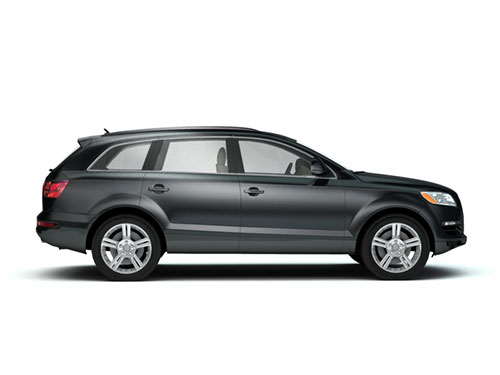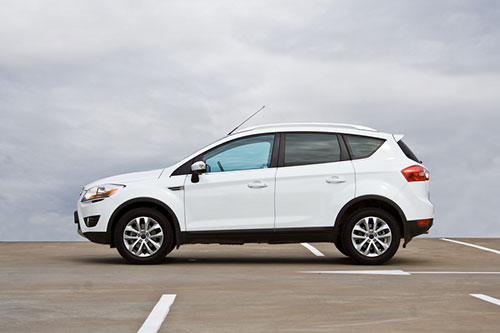Crossovers and compacts are the two most common types of sports utility vehicles(SUVs) available. Knowing the similarities and differences between these SUVs can go a long way, especially if you are shopping for an SUV that will better suit your needs.
By the way, what are the most common differences between those two?
Well, the most common differences between crossovers and compact SUVs lie in several factors, some of which are key aspects of these two types of sports utility vehicles. The factors in question are;
- The chassis or frame type.
- The chassis or frame plus body design.
- The weight.
- The ride quality and fuel efficiency.
- The payload capacity.
- The towing capacity.
- The overall size of the cars.
- The type of wheel drive system( front wheel drive system vs all-wheel drive system vs rear wheel drive system).
- Durability.
Contents
What Are Crossovers?

Also known as crossover SUVs, crossovers are unibody-based sports utility vehicles. In other words, these are SUVs with a frame and body that are combined into a single piece.
Unlike their compact SUV counterparts, they use the chassis or frame of an ordinary car.
What Are Compact SUVs?
Compact SUVs, on the other hand, refer to body-on-frame-based sports utility vehicles. They use truck frames or chassis, making them more rugged and heavier than their crossover counterparts.

Differences Between Crossover vs Compact SUVs
Even though many people tend to confuse the two types of vehicles, any well-informed person will tell you that crossovers and compact SUVs are two different kinds of vehicles.
After all, there are lots of differences between the two. Speaking of which the table below contrasts crossover vs compact SUV vehicles;
Crossovers
- Feature a unibody construction where the frame and the body form a single piece.
- Use the chassis or frame of a normal car.
- Are lighter than compact SUVs, thanks to the unibody design.
- Offer ride quality and fuel efficiency superior to compact SUVs. These benefits can be attributed to their lighter overall weights compared to their compact SUV counterparts.
- Are less rugged than compact SUVs.
- Best haul smaller payloads.
- Have lower towing capacities than compact SUVs.
- Are generally smaller than compact SUVs, and can be anywhere from subcompact to full-sized.
- Generally have front-wheel drive systems, even though a good number of crossovers also provide an all-wheel drive option.
- Are generally less durable than their compact SUV counterparts. That’s because of their design, which is less rugged than that of their counterparts.
- Are relatively cheaper than compact SUVs. That’s because these SUVs are generally cheaper to produce since their unibody design requires lower manufacturing budgets.
Compact SUVs
1. Feature a body-on-frame or truck-based design where the frame and the body are built separately and only joined together during the vehicle’s assembly process.
2. Use the chassis or frame of a truck.
3. Are heavier than crossovers due to the truck-based design.
4. Provide ride quality and fuel efficiency inferior to compact SUVs. These drawbacks can be attributed to their lighter overall weights compared to their compact SUV counterparts.
5. Are more rugged than crossovers.
6. Can haul larger payloads.
7. Have higher towing capacities than crossovers.
8. Are generally larger than crossovers and can be anywhere from mid-sized to full-sized.
9. Are, in contrast, rear-wheel drive vehicles with 4WD capabilities to handle most off-road drives.
10. Are generally more durable than their crossover equivalents. This extra durability can be attributed to their design, which is more rugged than the design of crossovers.
11. Are relatively costlier than crossover SUVs. That’s because these SUVs generally cost more to produce since their body-on-frame design requires higher manufacturing budgets.
Similarities Between Crossover vs Compact SUVs
Even though crossovers and compact SUVs have several differences, these vehicles also have a lot in common. The table below highlights some of the most common similarities between them;
- Have higher ground clearances, providing higher vantage points over other cars.
- Have ample interior space, hence suitable for large families with a preference for a car to a minivan.
- Combine the cargo area with the main cabin, eliminating the separated trunk design.
- Offer exceptional safety, both on-road and off-road, thanks to the safety features that they come with, which are beyond the standard.
Which Is Better Between Crossover and Compact SUVs?
The truth of the matter is that crossover and compact sports utility vehicles are both good car choices with greater performance, safety, and durability.
However, in my opinion, compact SUVs are better than crossover SUVs. Why’s that? Well, these SUVs are stronger and more durable than their crossover counterparts.
Apart from that, they are more powerful than the latter with higher payload and towing capacities. And those are some of the reasons why they are generally more expensive than crossovers.
Conclusion
Crossover SUV and compact SUV are terminologies many people often use interchangeably to describe sports utility vehicles(SUVs).
However, it’s wrong to use these terminologies interchangeably as each has its own meaning.
For instance, “Crossover SUV is a terminology that describes a sports utility vehicle with a unibody design. Compact SUV, on the other hand, is a terminology that defines a sports utility vehicle with a body-on-frame design.
Crossover SUVs and compact SUVs have a lot of differences and similarities as well. Though both vehicles provide value for money with greater performance, safety, and durability, compact SUVs tend to rank higher than their crossover counterparts.
That’s because their truck chassis design makes them more rugged and powerful, and these benefits come at an extra cost. If you don’t mind paying more, you’d be better off choosing a compact SUV over a crossover one.
